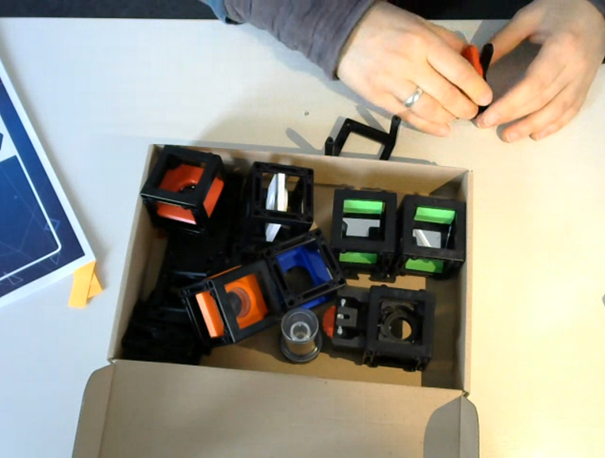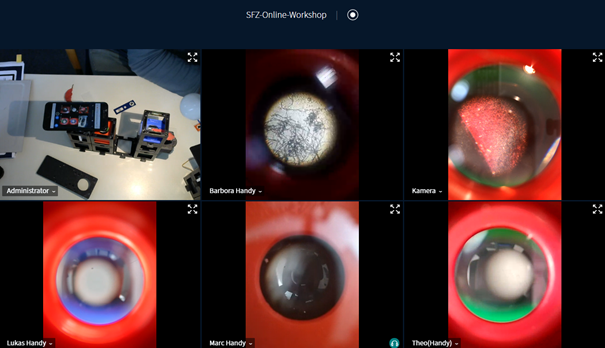UC2 BOX: A Modular Open-Source Toolbox for Optics Education
- Abstract number
- 34
- Presentation Form
- Poster
- DOI
- 10.22443/rms.elmi2021.34
- Corresponding Email
- [email protected]
- Session
- Poster Session 1
- Authors
- Barbora Marsikova (1, 2), René Lachmann (1, 2), Eda Bingöl (1), Rainer Heintzmann (1, 3, 2), Benedict Diederich (1)
- Affiliations
-
1. Leibniz Institute of Photonic Technology, Albert-Einstein-Str. 9, 07745 Jena, Germany
2. Faculty of Physics and Astronomy, Friedrich Schiller University, Jena, Germany
3. Institute of Physical Chemistry, Friedrich Schiller University, Jena, Germany
- Keywords
UC2, open source, open hardware, open science, open education
- Abstract text
UC2 (You.See.Too.) is a general purpose framework for building optical projects and bridging methods and technologies to provide tailored solutions. Building a microscope using UC2 becomes as easy as building a Lego© house, since the toolbox relies on commercially obtainable components and 3D-printed building blocks. It is available online [1] and fully open source, so that anyone can use it, reproduce it, and adapt it to their purposes. It is supported by detailed documentation and guidelines. Therefore, it provides an affordable and accessible tool for both education and research.
We have developed a comprehensive educational kit, called TheBOX, to be used for teaching optics, microscopy, and potentially other fields of science. It comes in several versions to serve different levels of education. The FullBOX, equipped with a Raspberry Pi computer, can be used to build for example a brightfield transmission or a light sheet fluorescence microscope, as well as many other systems, and provide control over image acquisition via electronics. The CourseBOX is meant for demonstration and hands-on experience of the principles of Optics and Microscopy alignment, Abbe diffraction experiment and basics of some commonly used microscopy methods. The MiniBOX, simple and compact, covers the experiments from the ray optics chapters of secondary and high school education.
We tested these BOXes in workshops at schools and universities and developed manuals for the experiments, to ease the job of the teachers and make it into an independent tool that can be used by anyone anywhere, as long as there is access to internet and a 3D printer. In the light of the pandemic situation, we also started testing the MiniBOX for the use in a flipped classroom concept. In that case, the course is held online while the participants borrow the BOX or build their own at home. This could be a welcomed option for universities and imaging facilities that are currently unable to offer practical courses and it could also support the development of international study programmes, which are taught online and attended by students worldwide.
Figure 1: MinBOX unboxing
Figure 2: Flipped classroom workshop done in a collaboration with Witelo e.V. (wissenschaftlich-Technische Lernorte in Jena)
- References
[1] UC2 GitHub repository [Online], 2019 [2021-04-12] Available on: https://github.com/bionanoimaging/UC2-GIT
[2] Diederich, B., Lachmann, R., Carlstedt, S. et al. A versatile and customizable low-cost 3D-printed open standard for microscopic imaging. Nat Commun 11, 5979 (2020). https://doi.org/10.1038/s41467-020-19447-9


